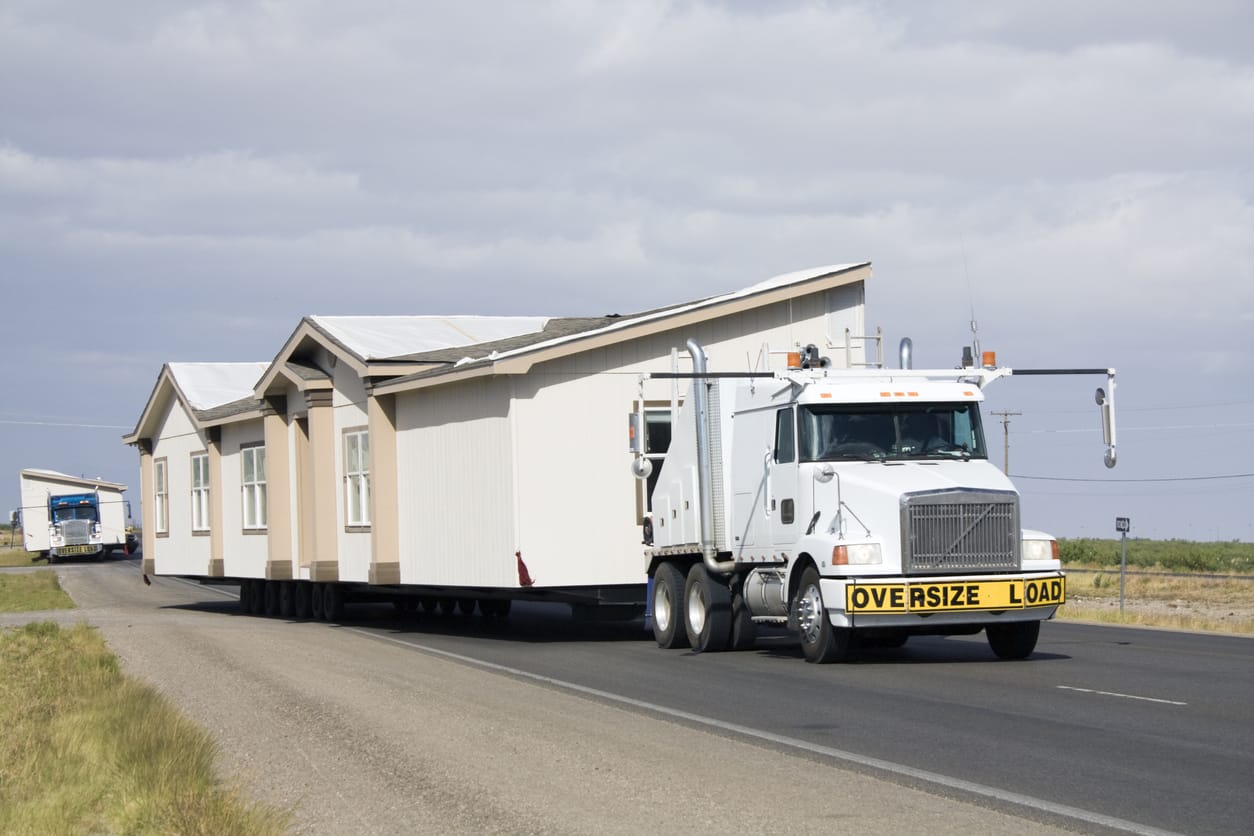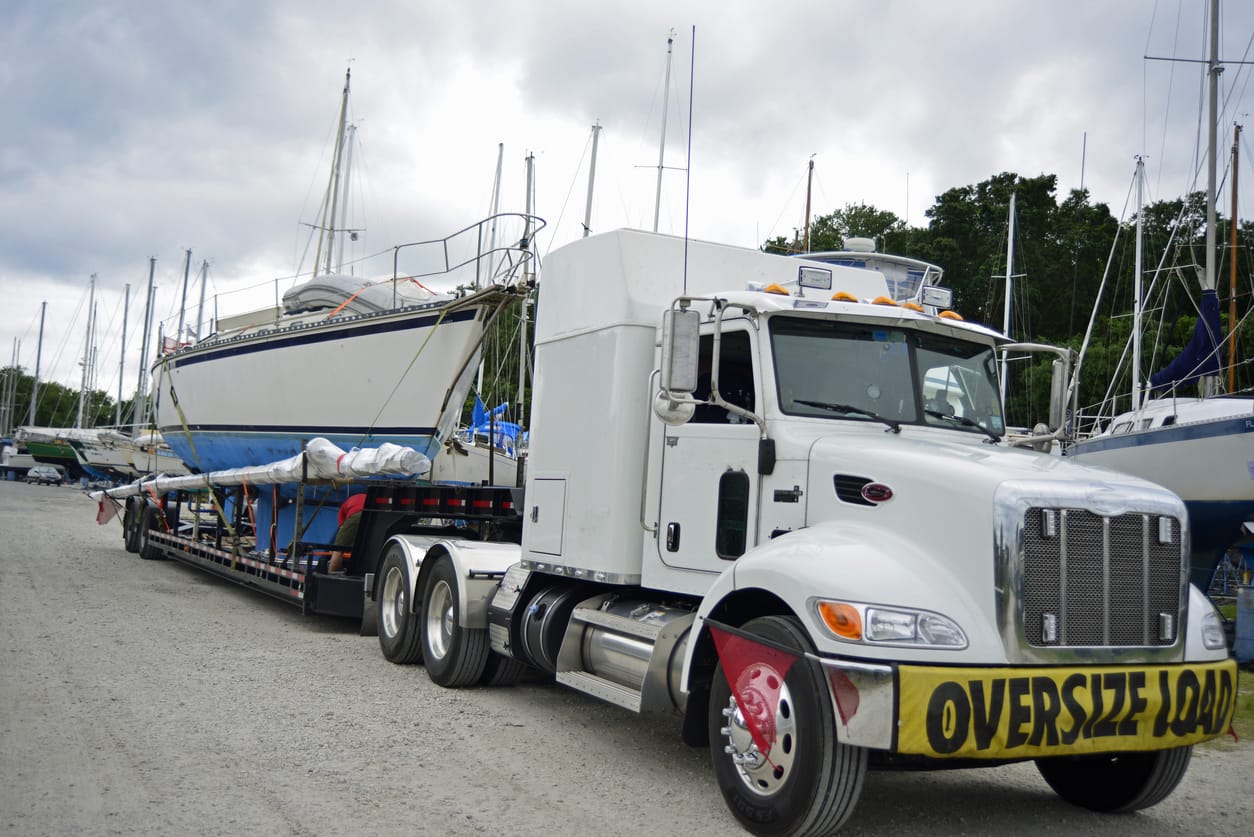Transporting a mobile home can be an extremely stressful and daunting task to accomplish. They require much more planning than shipping something smaller like a car even. There are many different options available for one to move a mobile home, all with varying advantages and disadvantages, and price points as well. By using this article, one could be walked through the steps to having their mobile home delivered to its destination.
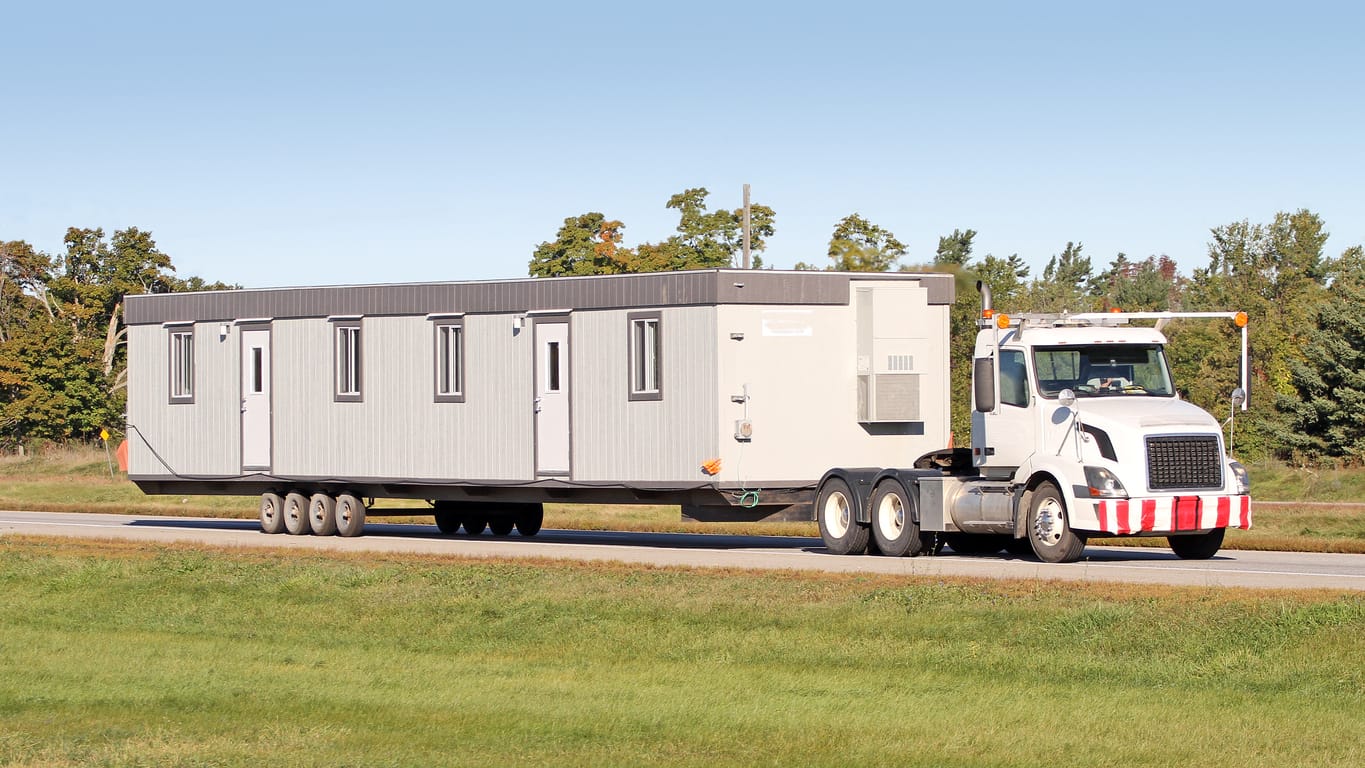
There are many different reasons to ship a mobile home. In today’s day and age with limited inventory, there is a strong possibility that you purchased the mobile home online out of state, and you need to have it shipped to its destination. Another reason could be that you are simply moving campgrounds, so you require your mobile home to be moved with you instead of selling your current mobile home and purchasing a new one.
Before covering the moving costs, one has to understand the various options available. Depending on the size and type of mobile home you are transporting, you automatically fall within one of the following categories:
- Legal – any load falling under the following specifications – 42’ ft x 8’ 4” x 13’ 6” ft – weight > 16,000 lbs.
- Oversized – any load exceeding the legal specifications would be considered oversized and would require special permits.
- Single – Wide – Mobile homes that are no more than 72 feet long and 15 feet wide
- Double – Wide – Mobile homes raining between 56-90 feet long and 26 feet wide.
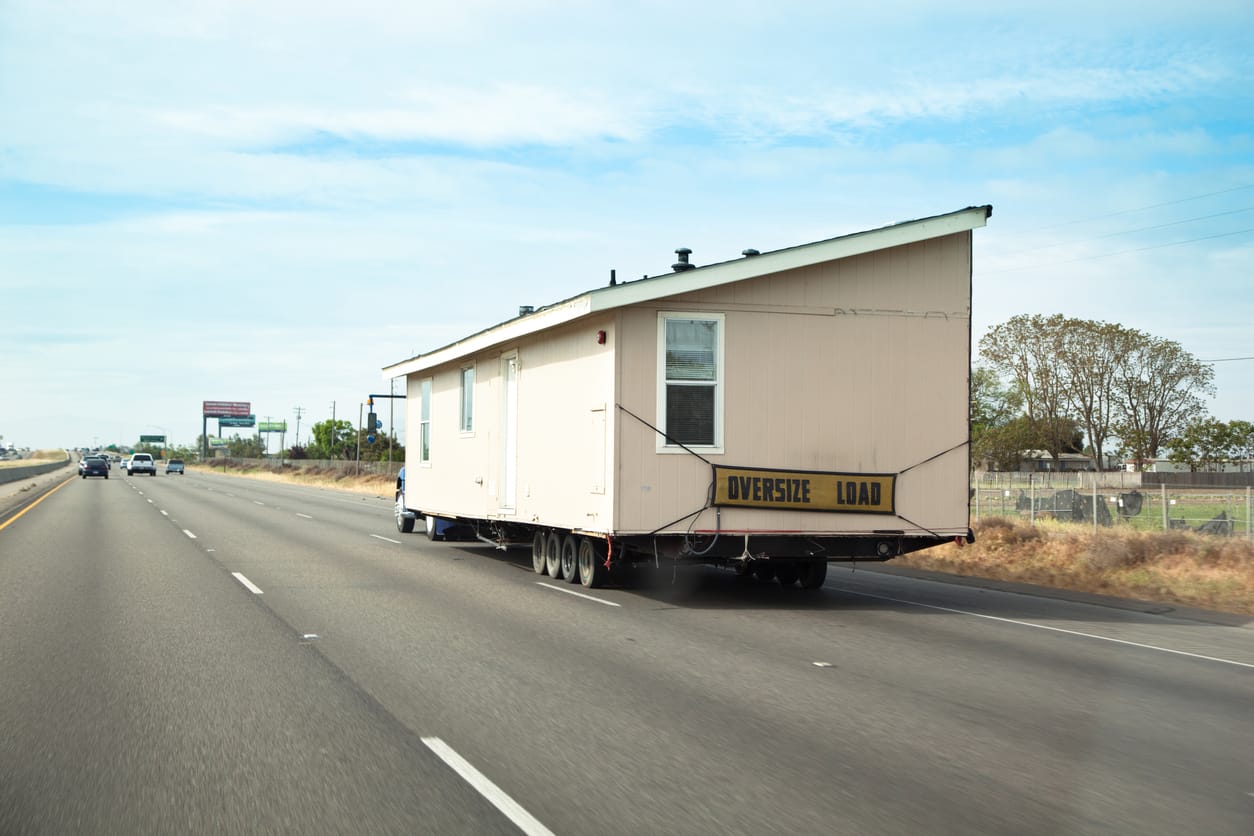
Transporting an object of this magnitude makes it highly unlikely that you will be moving the mobile home yourself, unless you have prior experience with it. It is essential that you work with a trusted company that understands the ins and outs of transporting the mobile home. Before you get in contact with a transport company, there are a few things you must have before you start working with the company.
- Type of mobile home – you first obviously need to know what type of home you are transporting (modular, park model, tiny home, mobile office, or even RV transport)
- Single or Double Wide – does your load fall under the specifications of a single or double wide that are listed above?
- Pickup and Delivery Locations – The Company must know if they are picking up from a residential or commercial address, and where they are delivering it to.
- Route Survey – Will the company need a commercial route planning?
- Towing or Hauling – would the object fall under a legal or oversized transport load.
- Permits/Escorts – The Company will need to know if they require a local, state, or nationwide permit.
- Set-up Services – This is based on your needs for setting up the home, to disconnect and reconnect utilities or attach axles and wheels for example.
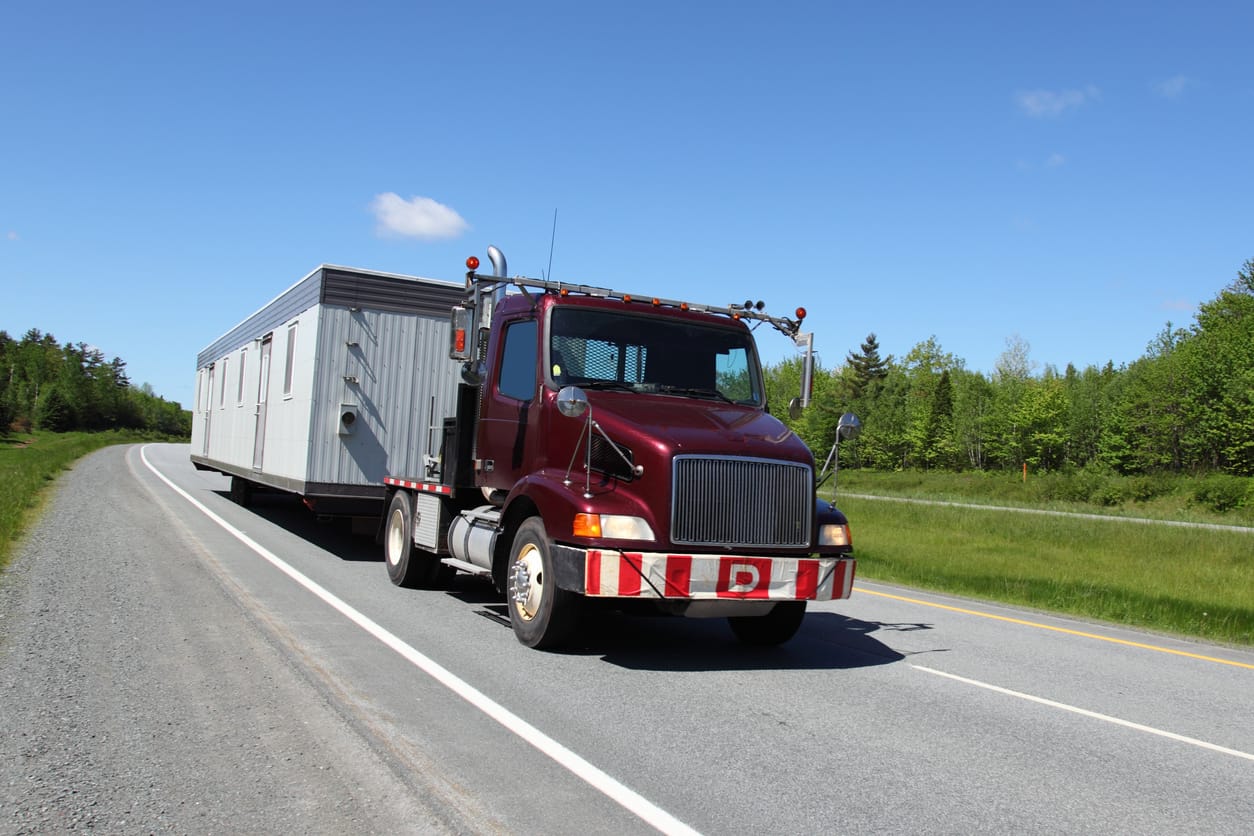
Unlike Amazon Prime Shipping, transporting a mobile home does not have a concrete set price as there are a multitude of factors that come into play when setting a price for moving the mobile home. The cost will vary depending on the size and weight of the mobile home, pickup and delivery locations, labor costs, moving materials, and permits and escorts. Furthermore, most companies will charge per mile, where it is about $4 – $5.50 per mile for the towing vehicle and $1.50 – $1.65 per mile for the pilot cars. *This per mile cost is also heavily dependent on the price of gas, and will fluctuate. It will also depend if it is a transport-only or full-service move. A transport-only move is exactly as it sounds, the company will include the attachment of the mobile home to the towing vehicle, move it to its new location, and unhook the mobile home. In addition to the actual transportation, the company would also take care of the legal side by obtaining the necessary permits and liability insurance. The full-service move covers everything the typical transport move would, in addition, it will disconnect all utilities, skirting and attached structures, and then reconnect them at the new location.
For a rough estimate, legal mobile homes that do not require permits or escorts will average between $500 – $3,500 for interstate travel, and $2,000 – $15,000 for nationwide travel. For single wide and doublewide homes that require permits and escorts will average between $1,500 – $4,000 for interstate travel, and $3,500 – $25,000 if you are traveling nationwide. However, these are simply estimates, and will vary depending on the move, so it will be helpful to get quotes from multiple companies to compare.
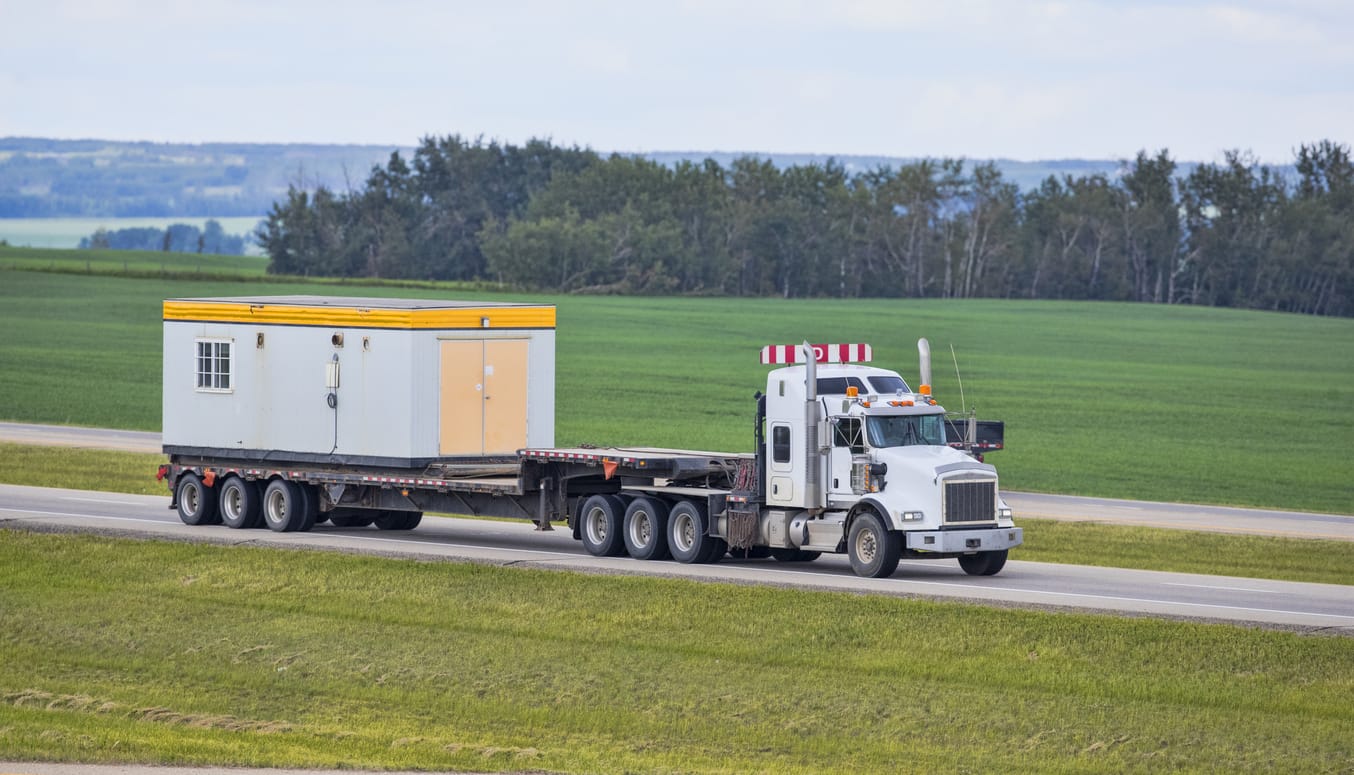
When you are searching for a company to ship your mobile home, you must conduct thorough research to identify the best company that will fit your needs. As you are researching companies, you may find there are many companies that will offer their services to you, you just have to sift through the quotes and find the company that suits you the most. I highly recommend you check referrals of companies that have been in business for a long period of time. When purchasing a mobile home, you are making an investment, and you want to protect your investment by going with a reputable, highly recommended company that has been in business for a long period of time and has experienced workers to complete the transport. Furthermore, one should thoroughly read the insurance policy of the company they are going with as they may change from company to company. Another area that you should consider is the availability of the company, the timing must be perfect when transporting an object this large with so many moving pieces. Finally, compare the quotes of the companies you feel comfortable going with.
From purchasing the mobile home to finding a company to move it, there are a lot of things you have to remember to do before you can actually move the mobile home. Here is a list of a few tips to remember when you are preparing for the move.
-
Conduct thorough research on the transport company
Pick a reputable company with many years of experience.
-
Remember the add-ons
This is an area many people forget about, things like a shed or an air conditioning unit could add extra charges.
-
Check the federal HUD regulations for the new location
The HUD sets national construction standards for manufactured homes. The HUD basically divides the country into three zones based on the areas susceptibility to natural disasters. Before purchasing and moving the mobile home, you must ensure it falls under the HUD regulations.
-
Local legal requirements
Some mobile communities have special building codes, park rules, and other regulations that you must comply with when parking your mobile home.
-
Give notice
This is only applicable to people who are currently parked in a spot, you may need to reread your lease agreement, and even provide written notice within a time period of your departure.
-
Requirements to switch utilities
You will need to contact your utility company to notify them of the switch to avoid any unnecessary fees.
-
New location
Make sure your new location is ready for the day you are planning on arriving, it would be awful if you accomplished everything and the new site isn’t prepared for you.

Transporting a mobile home has many different moving parts that makes the move virtually impossible to accomplish on your own. There are many things you must consider when preparing to move to the mobile home, and choosing the right company will help solve all of the problems for you. There are many different factors when determining the price of moving the mobile home from the size of the load to the distance of the move. No matter what, it is important to choose a reputable company as this is an important investment for you and you will want to protect it during the transport.
SAC transport is your one stop shop for full service mobile home transport. Call us today at (866) 452-3657 to find out more information and receive a free no obligation quote.
